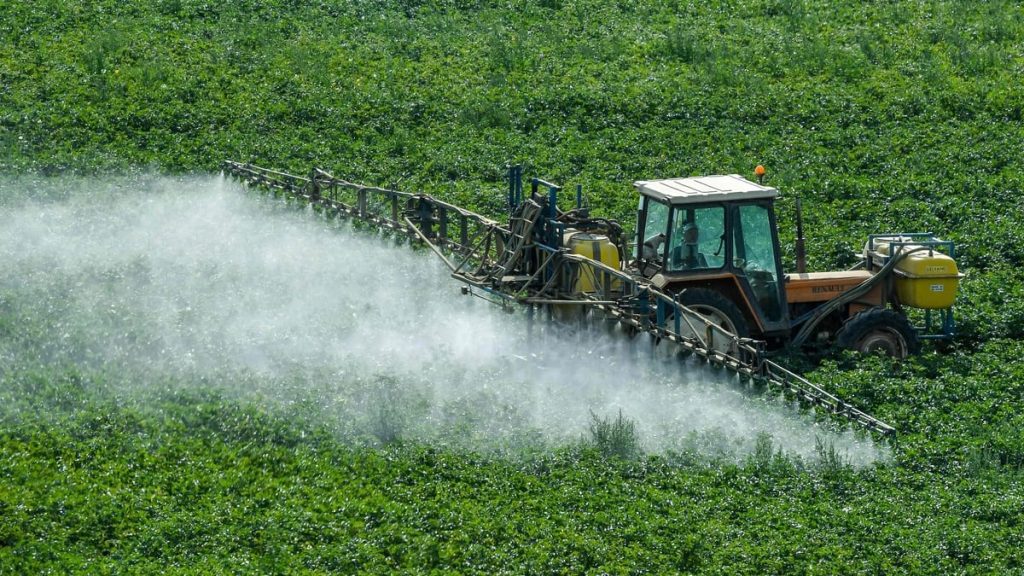
Used to protect crops, by destroying organisms harmful to plants, pesticides also affect the environment and health. However, their consumption has doubled worldwide since 1990, with strong disparities from one continent to another.
Increasing use on the planet
According to data from the Food and Agriculture Organization of the United Nations, farmers will use 3.54 million tons of active ingredients in 2021, up 11% in ten years and nearly doubling from 1990. Agriculture (FAO).
The agency measures volumes of phytosanitary products sold based on data transmitted by states or product vendors when not provided by states, which does not necessarily reflect their hazard. One method is far from ideal, but has merit to allow comparisons, argues Francisco Tubillo, a statistician at the FAO.
Privacy, the lack of willingness to share this kind of information, and different indications by country, he says, “make it one of the most difficult data to collect.”
Herbicides that fight weeds account for about half; Fungicides and bactericides, used against fungi and bacteria, 22%; and pesticides, intended to kill insects harmful to crops, 22%.
Plant protection systems, including synthetic insecticides and copper-based mineral supplements, for example, were “necessary to protect yields and farmers' incomes,” recalls Niklas Möhring, an agricultural economist at the University of Bonn.
Certainly, “many studies in recent years have demonstrated their impact on health, ecosystems, biodiversity, and sometimes the appearance of resistance,” he says.
But it is difficult for farmers to do without pesticides “because they work very well, are not expensive and can be used in different situations, often with the same machines, without the need for deep knowledge,” the researcher noted.
America and Asia are the biggest consumers
The American continent has been the largest consumer of pesticides since the mid-1990s, with production consumption expected to increase by 191% to 1.78 million tons between 1990 and 2021. Here, too, between 1990 and 2021, the highest levels of pesticides were applied per hectare on average.
Brazil is the world's largest consumer of pesticides (720,000 tons with an average use of 10.9 kg/ha), ahead of the United States (457,000 tons, 2.85 kg/ha).
In both of these countries, farmers often limit tillage in field crops (wheat, corn, soybeans) that require more herbicides.
980,000 tonnes of pesticides were used in 2021, a 67% increase since 1990, with Asia the 2nd largest consumer. However, it is below average in consumption per hectare. Indonesia and China are the 3rd and 4th largest consumers in the world.
In Africa, consumption has increased by 175% compared to 1990, but is extremely limited per hectare.
Europe is trying to limit
According to the FAO, pesticide use in Europe has increased by only 1% since 1990, reaching 505,000 tonnes in 2021.
But this stabilization “shows that 10 to 15 years of policies on pesticides have not had a real positive impact,” commented Niklas Möhring, referring to the obligation of each state in the European Union to develop a strategic reduction plan. Denmark, however, according to him, has shown that it is possible to move the lines with a system of high taxes for products that are most dangerous to health and the environment.
The largest consumers per hectare in Europe are the Netherlands (10.9 kg/ha) and Ireland (7 kg/ha). France averaged (3.7 kg/ha), followed by Spain (4.6 kg/ha) and Germany (4.1 kg/ha) and Poland (2.3 kg/ha).
Even within a country, usages vary greatly from one type of culture to another. In France, according to the statistics service of the Agriste Ministry of Agriculture, in 2017 or 2018, soy received an average of less than 3 treatments per year, common wheat 7 treatments and apples 36 treatments.





More Stories
Sportswear: Lolle acquires Louis Garneau Sports
REM is still innovative enough to foot the bill
A trip to the restaurant with no regrets for these customers